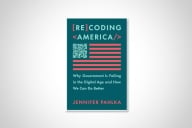You have /5 articles left.
Sign up for a free account or log in.
The Onion did a piece a while back on Americans’ attitude toward mass transit. As the piece had it, 98 percent of Americans favor increased use of mass transit by other people; that way, their own commutes wouldn’t be slowed by so much traffic.
That’s kind of how gen ed reforms work. Departments frequently agree that the overall requirement is too high, but then defend their own courses to the death. The problem is all those other courses.
Of course, I’m assuming the relatively standard “checking boxes in categories” model of gen ed. In this model, students have to take so many credits in humanities, so many in social sciences, so many in math and the like. A “guided pathways” approach gets much more prescriptive about which boxes to check in each category but doesn’t address the existence of the boxes or categories themselves. It might suggest a default option for a student who doesn’t know which math to take, but it wouldn’t address whether the student should take math at all.
I mention this in light of the Inside Higher Ed piece about Wichita State proposing to reduce its gen ed requirements from 42 to 36 credits. Apparently the move was prompted by a state law capping bachelor’s degrees at 120 credits, down from 128. For programs that were already at or near the old cap, getting down to the new one required either gutting program offerings or trimming gen ed.
It’s a familiar scenario, because it’s playing out here, too. Last year New Jersey capped associate degrees at 60 credits, down from 66, and bachelor’s at 120, down from 128. But the state left in place a minimum of 45 credits of gen ed for an associate of arts degree. When 45 out of 60 credits are spoken for, programs get pretty squeezed. So we’re also looking at reducing the gen ed requirement to give programs some breathing room.
Which is fine, until you start naming names.
Enrollments drive resources, including staffing. When enrollments in a given area take a sharp dip and stay there, that area starts to shrink. Ideally, shrinkage by attrition is enough, but sometimes it takes something more direct than that. Getting gen ed status for a course -- or, ideally, getting gen ed requirement status for a course -- insulates it against enrollment pressures. Alternately, stripping gen ed status from a course -- or demoting it to a nondefault option within a category -- presents an economic threat to the affected department. Departments know that.
In a perfect world, of course, we’d make curricular decisions based solely on student needs. But anyone who doesn’t see interest-group politics at play isn’t looking.
At the community college level, the issue is complicated by transfer considerations. Different four-year colleges want different gen ed courses, thereby defeating the most robust version of a guided pathway. Some places have foreign language requirements; some don’t. Some require world history, and others require U.S. history. Some have a freestanding diversity course requirement, and others allow one course to fill multiple categories at once. Taken together, that means that we aren’t just dealing with local campus preferences. And even if we had agreement among the state colleges, which we don’t, we still couldn’t compel agreement among the private ones. So when a student asks “which history should I take?” the answer is often another question: “Where do you want to transfer?”
If we could get away from the checklist model, it might be possible to have these conversations in a more productive way. But as long as requirements equate to credits, which then equate to jobs, the conflicts of interest will persist. And four-year colleges have proven much more skeptical of courses that don’t cleanly fit into a checklist than they are of ones that do.
I don’t know yet if the Wichita State proposal will pass, or who drew the short straw, but I’m impressed that it got this far. Telling someone that their course is the other course is a tough sell. But as long as we stick with the checklist model, the only way to shorten the list is to cross a few things off it.



